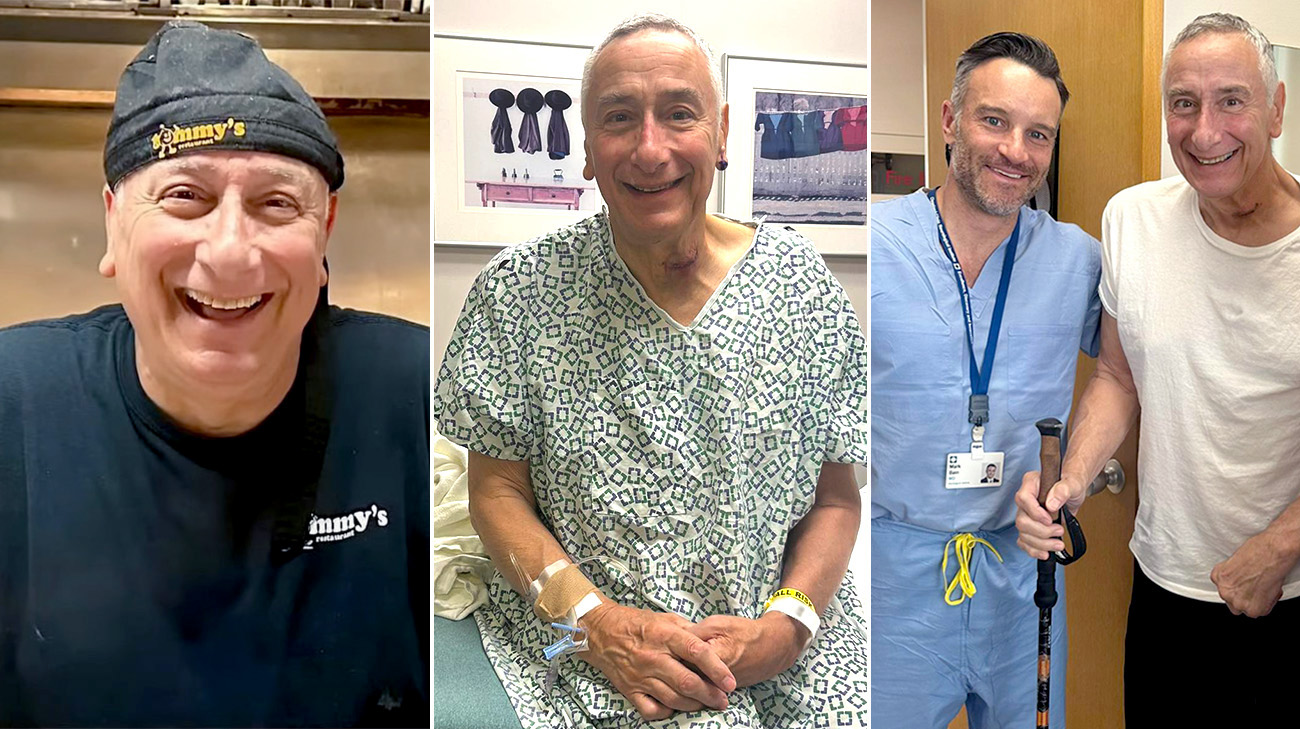
For more than 50 years, restaurateur Tommy Fello has been a familiar face behind the grill, preparing dishes for the community he loves in Cleveland Heights, Ohio. At 71 years old, he had no intention of slowing down. But after suffering a stroke, the life he had known for over five decades was put on hold.
“It was Christmas Day 2023. I had just made breakfast and everything was fine. But then I started feeling a little weak on my left side. My wife and daughter told me I didn’t look quite right, and I said, ‘You know, I don’t feel quite right,’” recalls Tommy.
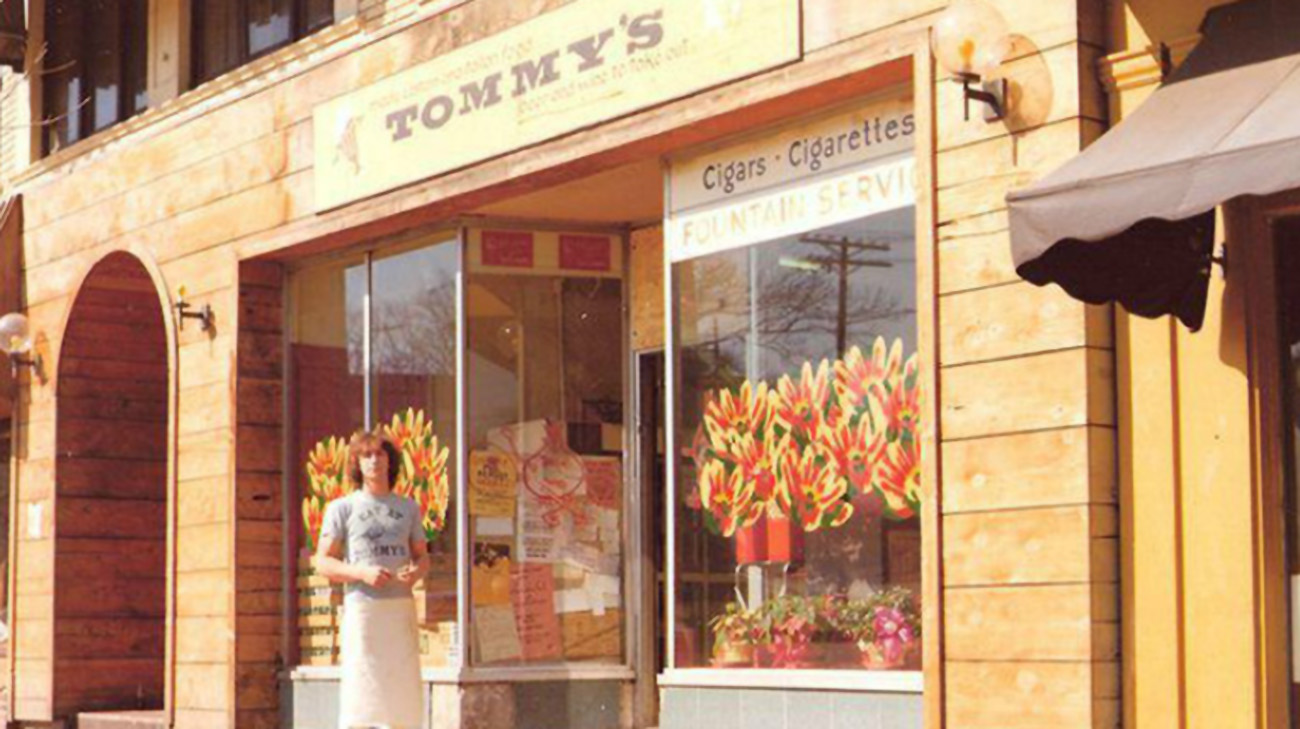
Tommy outside his restaurant’s first location in 1972. (Courtesy: Tommy Fello)
His family decided to call 911, and at the hospital, they discovered he suffered an ischemic stroke – which occurs when a blood clot blocks blood flow from getting to the brain.
“At one point, I lost all motor skills on the left side of my body. My arm and leg felt like cadavers. They had no movement, nothing,” says Tommy.
He was treated in the hospital for a few days and then immediately went to a rehabilitation facility for three weeks. Following this, his road to recovery was just getting started with more therapy at home. For a period of time, Tommy needed a wheelchair to get around.
“Everyday tasks like showering became very cumbersome all of a sudden. Luckily, I have a big family, so they were over all the time to help me,” says Tommy, who has five daughters and 14 grandchildren.
Following months of therapy, Tommy regained strength in his leg and started moving more freely with the help of a walking stick. However, while he was making strides in this area of his recovery, other aspects remained challenging.
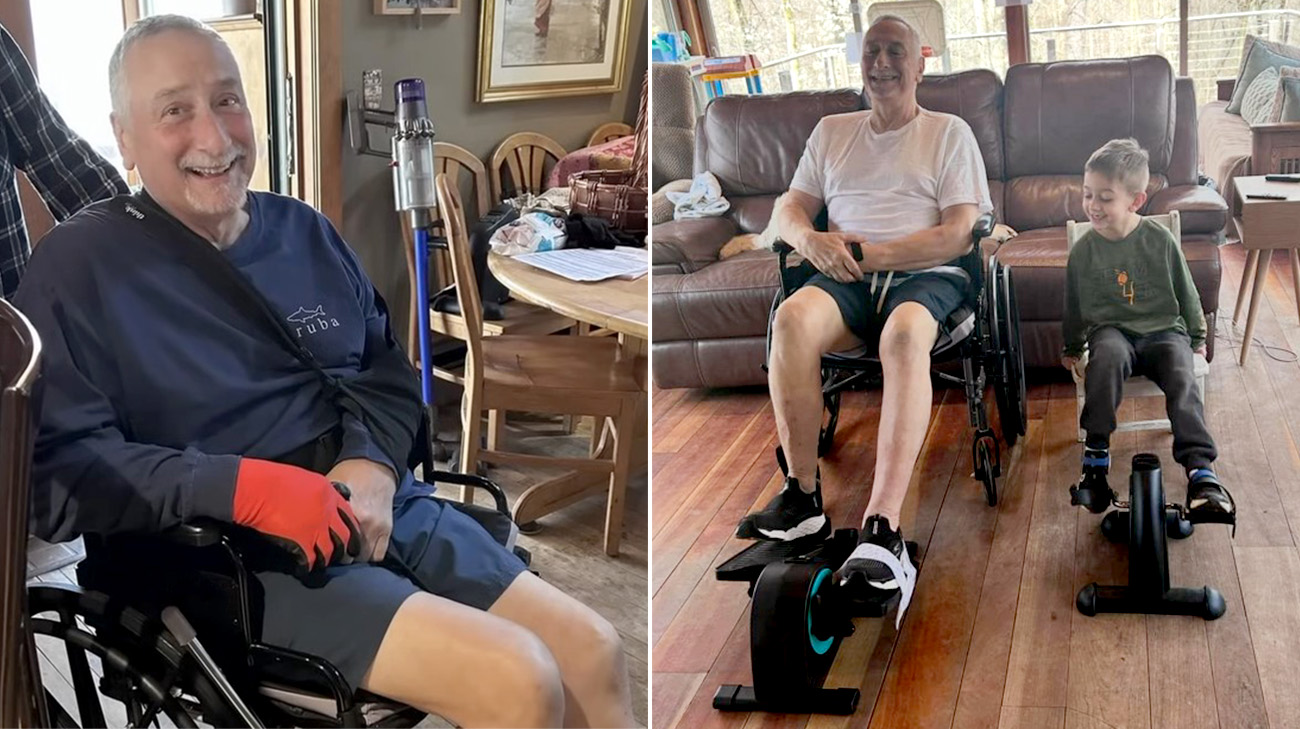
Ever since his stroke, Tommy has been undergoing physical therapy to improve mobility on the left side of his body. (Courtesy: Tommy Fello)
“My arm and hand movement were way behind my leg. And since I’m a cook at the restaurant, I wanted to regain that ability and get back to work,” says Tommy.
After sharing a health update on his restaurant’s social media pages, one of Tommy’s customers reached out to tell him about vagus nerve stimulation, which uses an implantable device to send electrical signals to the brain through a nerve in the neck called the vagus nerve. Also used to treat epilepsy and depression, this technique has been more recently approved as an add-on to rehabilitation therapy for people who have moderate to severe loss of arm and hand function from an ischemic stroke.
“We believe stimulating the vagus nerve generates some plasticity in the brain, allowing it to form new connections in areas that control motor function. When paired with stroke rehabilitation therapy, patients with this device have seen improvements in their hand and arm function,” says neurosurgeon Mark Bain, MD.
Interested in the treatment option, Tommy came to Cleveland Clinic, where he says Dr. Bain thoroughly explained what the process would be. “Dr. Bain’s comforting manner made me feel eager and ready to do the procedure,” says Tommy.
During the outpatient surgery, small incisions are made in the chest and neck. The vagus nerve stimulator device is placed under the skin in the chest, and a wire lead with electrodes is used to connect the device to the vagus nerve. In April 2025, Tommy underwent the procedure and became the first patient in Ohio to get the vagus nerve stimulation device for stroke treatment.
“They gave me the anesthesia, and before I knew it, the procedure was already done. It felt so efficient and quick I thought I had never moved. I stayed in the hospital for a couple of hours just for monitoring and then I was able to go home,” says Tommy.
Following the procedure, patients undergo therapy sessions where their care team activates the device to stimulate the vagus nerve. Patients can also activate the device at home while doing exercises or other everyday tasks. “For some, the stimulation can amplify the impact of their rehabilitation sessions and exercises at home,” says Dr. Bain.
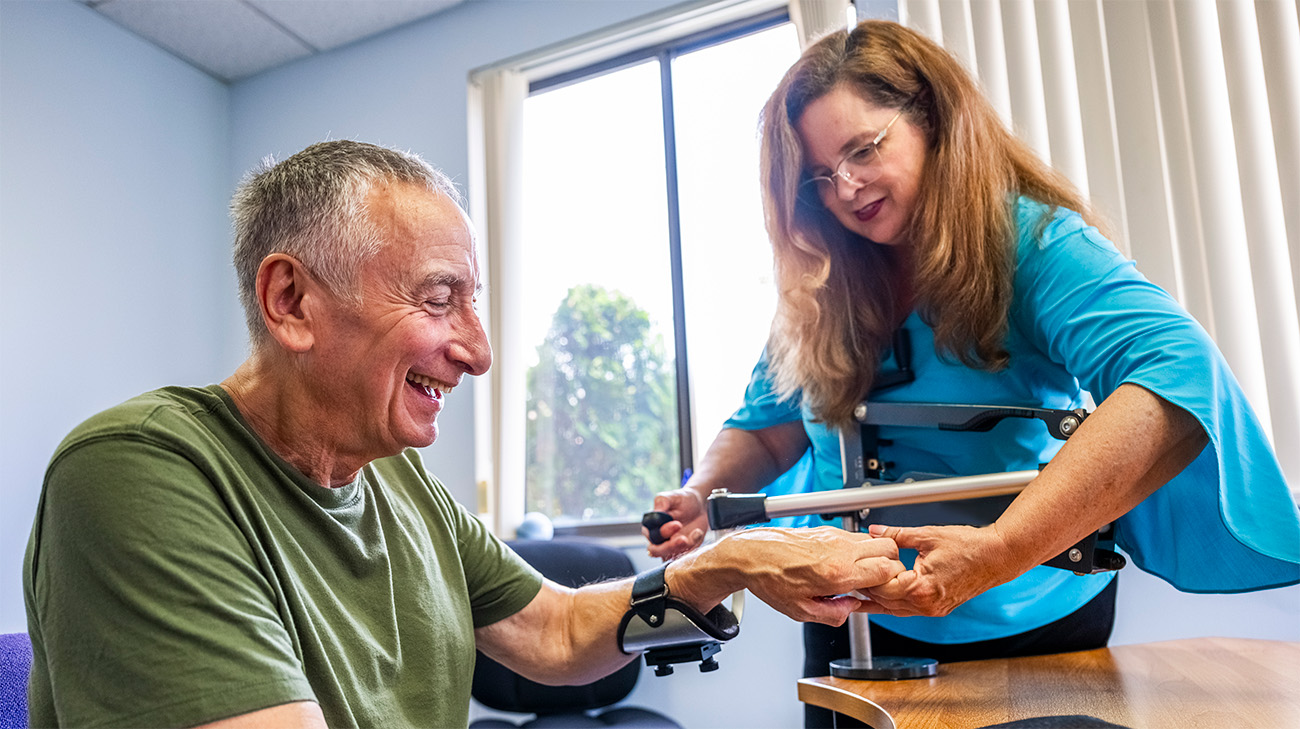
Tommy working with Dr. Sharon Covey at the Center for Stroke and Hand Recovery. (Courtesy: Cleveland Clinic)
Although this process takes time and the effectiveness of the stimulation varies from patient to patient, Tommy is already seeing improvement in his left arm and hand function.
“The movement in my arm is getting better, and I can pick things up more easily. Some of my therapy exercises are getting easier as well,” says Tommy, who’s still working on being able to fully lift his left arm without assisting with his right arm. While his recovery continues, he’s encouraged by the progress he’s made.
“When I couldn’t feel my left side in the hospital after the stroke, I thought I’d never be able to walk from that point on. But now I’m able to get around again because of all the care I’ve gotten so far. Even though I’ve got a ways to go, to come as far as I’ve come is very rewarding,” says Tommy.
Thankful for his progress, the 72 year old keeps pushing himself so he’s able to one day get back to working at the restaurant he started in 1972. Moving forward, Tommy and his care team hope sharing his story and the improvement he’s seen with vagus nerve stimulation can help others.
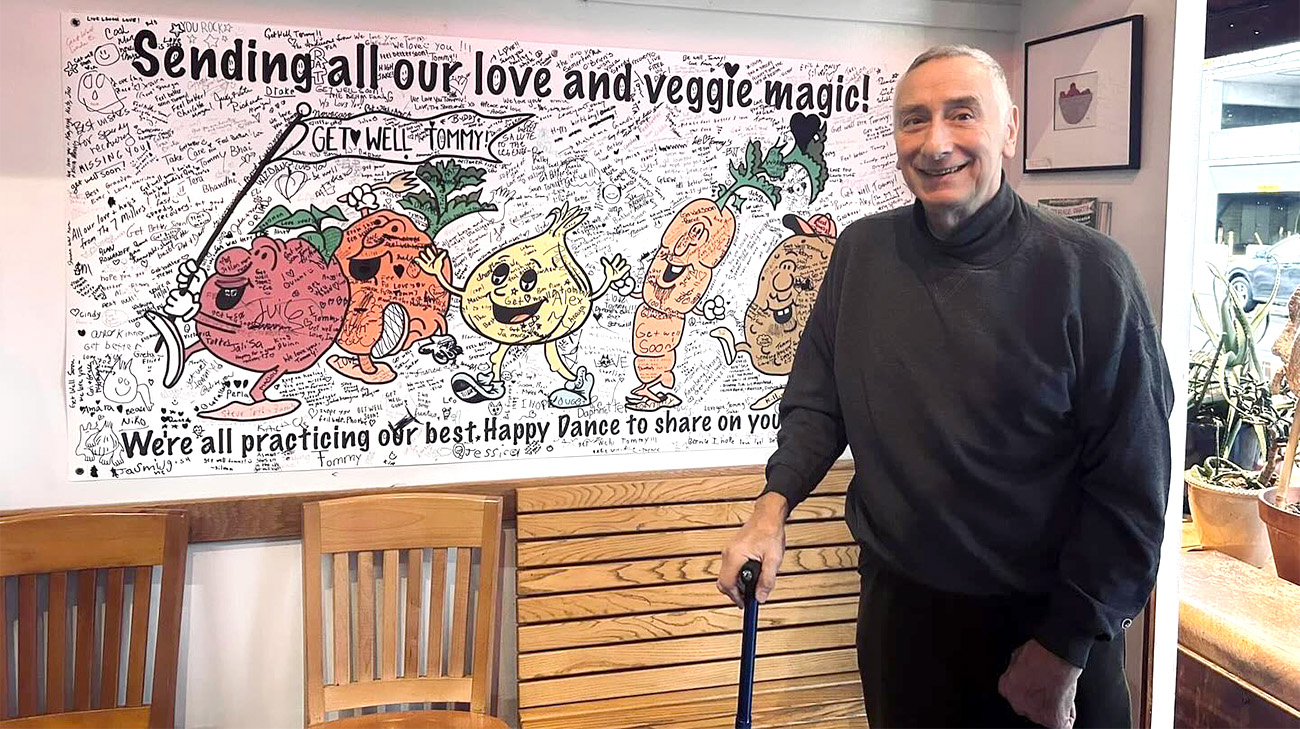
Tommy says he’s thankful for everyone’s support throughout his recovery so far and looks forward to eventually seeing his customers more frequently at the restaurant again. (Courtesy: Tommy Fello)
“We’re very good at treating someone when they’re having a stroke, but there have been limited surgical interventions to help patients regain any lost function afterward. Vagus nerve stimulation is now a potential option for those who’ve lost hand and arm function after an ischemic stroke,” says Dr. Bain.
“If that customer hadn't told me about this treatment for stroke, I wouldn’t have known about it. So, my job as a patient and somebody who cares very deeply about my customers is to share whatever I learn. I want to share the experience I went through so that if, God forbid, something like this happens to them, they know about all the available options,” says Tommy.
Related Institutes: Neurological InstitutePatient Stories
Three Brothers With Prostate Cancer Stress Importance of Knowing Your Family Health History
Sep 2, 2025
Port St. Lucie Family Returns to Tradition Hospital to Say “Thank You”
Aug 27, 2025
No Distance Too Far as Central Florida Couple Embarks on Mission to Find the Right Hernia Surgeon
Aug 25, 2025
“Unabashedly, I was trying to find someone that really cared because I knew it was going to be a life-changing thing, I couldn’t be happier with my choice.”


